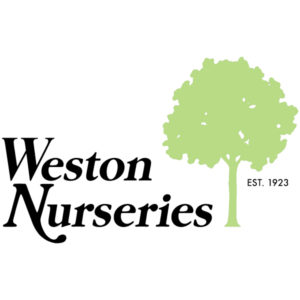Vertical gardening has become a buzz word in recent years. It may conjure up images of an elaborate wall or rooftop gardens, but in the vegetable garden, vertical vegetable gardening is a time-tested, common-sense way to grow a lot of vegetables in a small footprint. Trellises, cages, stakes, and arbors have been used in vertical vegetable gardening long before gardening trends were even being tracked.
Even if you have acres of space to garden, growing plants upward, on some type of support offers other benefits.
• Fruits and vegetables are lifted off the ground, where they would get splashed with soil, exposed to more diseases and risk rotting.
• It’s harder for four-footed pests to reach the fruits, although not impossible. They will have to climb and support themselves while munching.
• Trellised plants are exposed to more sunlight, which will help fruits ripen faster and allow for more photosynthesis.
• Air circulation is better. This will keep the leaves drier and help prevent fungal diseases. It will also cause the leaves to desiccate during hot, sunny, or windy times, so extra watering might be necessary.
• Pollinators will have an easier time flitting from flower to flower.
Read on for tips on which vegetables to trellis and the best methods.
Growing Beans
You will see bean seeds listed as either “bush” or “pole.” Bush beans won’t grow taller than a couple of feet and tend to have a short, quick growing season with only a couple of harvests before the plants give out. These short plants can usually support themselves, or at least each other, and won’t require a trellis. Pole beans are a whole other story. These plants can send their shoots 10 to 20 feet upward. The stems will wind around anything they can reach, including other plants. One of the most popular ways of trellising pole beans is a tripod or teepee constructed of three bamboo poles. This works extremely well, especially if you add a few lengths of string or twine to get them started. However, it is not the only way to trellis bean plants and some of the taller varieties will double over themselves on a short teepee. A longer trellis or some type of arbor might be a better choice for these. Pole beans will spend at least a month simply growing vine. This means they won’t start producing bean pods as quickly as bush beans, but once they do, they will continue on the whole season. You will get a much bigger yield from pole beans and they tend to be tastier because all those vines and leaves are photosynthesizing and making sugars. To get both an early start on bean season and a long season of harvest, you should plant both varieties. The bush beans tend to bloom in May and June and, as they fade, the pole beans start their initial harvest. There are dozens of different types of beans to grow. Green, or string, beans remain the favorite of backyard gardeners, but since you can easily plant three different types on each teepee, it’s fun to experiment with asparagus, runner, lima, and Romano beans, too.
Growing Cucumbers
Cucumber plants have a reputation for being overly prolific. You won’t need a lot of plants, but to ensure a steady supply, you might want to make two plantings. You can directly sow plants in late spring and again in mid-summer. That way the later plants can take over when the early plants tire out.
Another thing to keep in mind is that most cucumbers need both male and female flowers in order to set fruit, so you will need more than one plant to ensure there are enough female flowers for a good harvest. Although there are cucumbers listed as “bush” types, these are really just short vines. They won’t scamper up a trellis, but they will sprawl and take up room on the ground. For the biggest harvest, climbing cucumbers might work better. Cucumber vines are large and heavy. Make sure your trellis is strong. An A-frame trellis works well with heavy vines, giving sturdier support than an upright trellis or bamboo teepee. The vines have clasping tendrils that will grab hold of any type of thin support such as netting, bamboo, or twine. Once you get them climbing, the only other thing required is to keep harvesting. If you leave too many fruits on the vines, they will stop producing new ones. As with squash and melon plants, cucumbers can be prone to powdery mildew. Growing them on a wide trellis that allows plenty of airflow and sunshine will help keep the leaves dry and lessen their chances of getting powdery mildew. If your vines begin to grow out of hand, you can keep them in bounds by pinching off the top tip of the vine. This will keep the vines from getting longer and divert energy back into growing and ripening the fruits.
However, it’s not a one-shot solution. The plants will continue to try and send out new growing tips, so you’ll have to be alert and keep pinching them out.
Growing Melons
Melons can be a little tricky to grow on a trellis or support. These are heavy vines and will need a strong, sturdy trellis. Although the vines have clinging tendrils, such as cucumbers, the fruits themselves are heavier and can fall off the vines, cracking open when they hit the ground. The popular muskmelons are especially prone to falling since they detach or “slip” off the vine when they are ripe. Usually, this is seen as a feature, but you will need to create some sort of cradle or sling for each fruit to protect them. Even then, larger melons such as watermelon are best left on the ground.
The most common way to create a melon sling is to use lengths of stretchy fabric, like old pantyhose or T-shirts. Cradle the maturing fruits in the fabric and tie the ends to the trellis. If you grow a lot of melons, this can be a bit tedious and you might prefer to simply grow your melons on the ground. However, it only needs to be done once and slings work very well. Don’t put the slings out until the fruits start to get about mid-size. You want to allow the fruits to get plenty of sun and air.
Growing Peas
As with beans, some pea vines only grow a couple of feet tall. It’s not worth putting up a trellis for these short season plants; a little pea brush, a bushy tree branch stuck in the soil nearby, will support them just fine. However, tall vining peas can easily reach six to eight feet in height. Growing them on a trellis is necessary, or you will get a tangled mess on the ground. These are not heavy plants and you can get away with using some type of straight upright trellis or fencing. This will make it a lot easier for you to find the pods when harvesting. Luckily peas climb with clinging tendrils, so they won’t require much effort on your part. The delicate tendrils prefer to coil around thin supports, such as twine or netting. Use a biodegradable net and you can toss the whole thing into the compost when you’re done with harvesting. It’s a lot easier than trying to pry the vines loose. As with pole beans, tall vining peas will take a little longer to start producing pods than the short types, but they will produce a bigger yield and a longer season (weather permitting).
Growing Squash and Pumpkins
Squash plants are huge. Even the fruits are large and heavy. Trellising them is a great way to save ground space, but you cannot skimp on the supports. If the trellis snaps, there will be no getting it back upright. Make it even sturdier than you think it should be because squash plants are particular favorites of groundhogs and they will climb if they get the chance.
A popular squash trellis is wire fencing over an A-frame or suspended from the side of a building. As with cucumbers and melons, squash vines have scratchy sticky, tendrils that will grab hold of anything nearby in their attempt to climb higher. Larger winter squash and pumpkins are heavy and will need some type of sling or cradle. Just like melons, pumpkins need a stretchy fabric such as old pantyhose or T-shirts to place under the fruits and tied to the trellis to keep the heavy fruits from detaching and falling off the vines. If you have space, it’s much easier to just let the vines ramble on the ground. Summer squash is a better option for trellising. It won’t need quite as much reinforcement as winter squash and pumpkins since you’ll be harvesting regularly and the vines won’t get as heavy. Summer squash also won’t need slings to support the fruits. You might want to seed two crops of summer squash. Sow one in mid-spring and again in mid-summer so you have a long harvest. Winter squash are long-season plants and most people won’t have the time for two crops.
Growing Tomatoes
Many people don’t realize that tomatoes are vines. They have no means of attaching themselves to supports, as anyone who’s ever tried to grow them has learned, and they are extremely heavy when loaded with fruits. Left to their own devices, they will grow into a tangled mess. That’s why so many means of controlling them have been developed. There are tomato stakes, cages, and trellises, with some easier to use than others. You can trellis tomato plants in an espalier fashion to improve air circulation and allow the sun to hit the fruits. Since tomatoes are prone to a number of diseases, any help in preventing them is greatly appreciated. Staking tomatoes can cause the stakes to snap. However, there is a lot to be said for the convenience of cages. If you get a sturdy cage, you won’t need to continually tie the branches. You can just keep tucking them through the openings in the cage and let the wire cage do the supporting. You can use a double decker cage that stands eight feet tall.
That may sound like a lot, but indeterminate tomatoes will easily fill it. One last note about cages—if storage space is tight, look for cages that fold flat. They snap back into shape and remain sturdy when you need them.
By Marie Iannotti at thespruce.com






